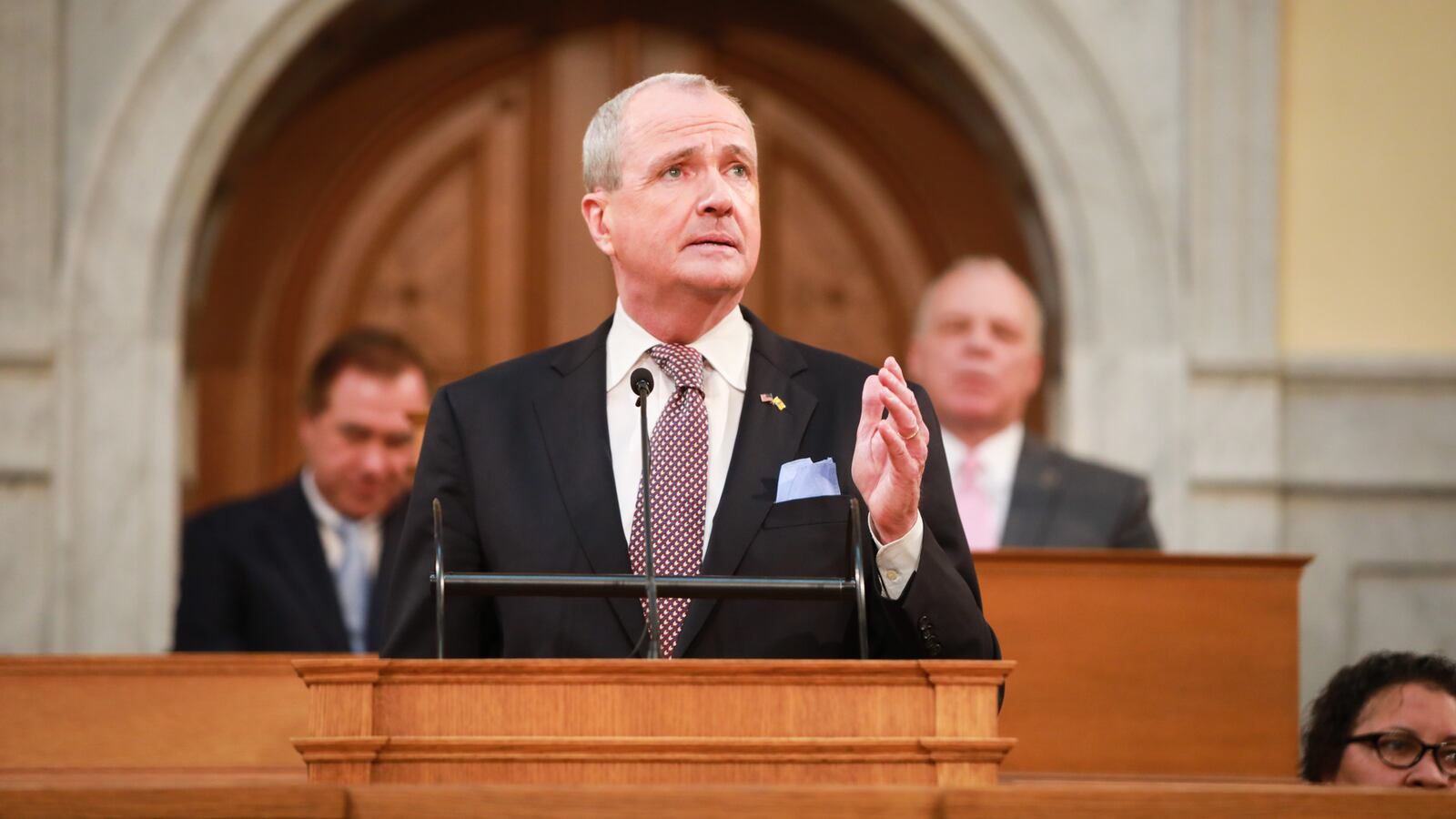Gov. Phil Murphy called for another annual hike in school spending on Tuesday, part of a multi-year plan to boost state aid to Newark and other underfunded school districts.
Murphy’s proposed budget would ramp up state aid to K-12 school districts by more than $336 million next school year, totaling over $9 billion. If lawmakers agree, the plan would mark the third annual increase in education spending, amid Murphy and the legislature’s efforts to fund the state’s school-funding formula fully.
The increase includes money that would be shifted away from districts that have exceeded their mandated funding level to districts such as Newark, which has been underfunded according to the formula for a decade. Later this week, each district will learn how much aid it stands to gain or lose under Murphy’s proposal for the next fiscal year.
“School funding is an investment in our future,” Murphy, a Democrat, said Tuesday during his third annual budget address. “Our budget proposes keeping us on our upward trajectory with an additional $336 million investment in our K-through-12 classrooms for the upcoming school year.”
The funding formula, which is based on each district’s needs and includes state and local revenue, has not been fully funded since 2009. This school year, about a third of districts received less money than the formula says they are due — a gap that will require an extra $1.6 billion in state aid to plug, according to the nonprofit Education Law Center.
In 2018, Murphy and state lawmakers agreed to a seven-year plan to boost state aid incrementally to underfunded districts, including Newark, until they receive the amount mandated by the formula. Districts that already spend more than required by the formula will see cuts, though Murphy’s proposal includes $50 million in emergency funds to help offset those reductions.
In last year’s budget, Newark got a 3.15% bump in state aid. Yet the district remains short nearly $233 million — or $4,410 per student — based on the formula. The gap was mainly driven by a shortfall in state funding, which makes up the largest chunk of the district’s budget, though local tax revenues were also $64 million lower than required by the formula.
“Newark is currently owed $166 million in state aid under the funding formula, so we’ll wait to see how much of the gap is closed” in the final budget for next fiscal year, said Danielle Farrie, the Education Law Center’s research director, in an email.
Newark voters approved a 2% property tax increase last year to help fund the schools, but the city must continue to boost its contribution to the district’s budget, Farrie added.
“We’re hoping these increases are sufficient to begin restoring the teachers, support staff, and other essential resources cut from Newark district schools in recent years,” she said.
Last year, even with the bump in state aid, Newark was forced to cut some teaching positions and postpone building repairs in order to balance the budget. It requested nearly $37 million in emergency state aid but received only $4 million.
Murphy’s spending plan also calls for an $83 million increase for preschool and $50 million to expand the state’s tuition-free college program. The expansion would allow four-year public universities to join community colleges in covering two years of tuition for students whose annual household income is less than $65,000, according to the governor’s office.
Murphy would pay for the new expenditures in his proposed $40.9 billion budget by hiking taxes, including on people with income over $1 million. The Democrat-controlled legislature has previously balked at Murphy’s so-called millionaire’s tax, but state Senate President Stephen Sweeney recently signaled that he is open to considering it in exchange for increased investment in the state’s public-employee pension fund.
Lawmakers and the governor will now wrangle over the spending plan before settling on a final budget for next fiscal year, which begins July 1. In the meantime, districts must submit preliminary budgets next month based on Murphy’s proposal.
In Newark, district officials have reviewed schools’ spending plans, which principals are now expected to present to their school communities. In late March, officials will host a public hearing to present the district budget. The following month, Newark residents will vote on whether to approve the budget.
At a school board meeting this month, district officials said they assumed flat funding from the state when preparing the budget out of an abundance of caution. But they also explained that they were eagerly awaiting Murphy’s spending plan.
“That’s key to what is it we have,” said Valerie Wilson, the district’s school business administrator, “and how much can we therefore spend.”

